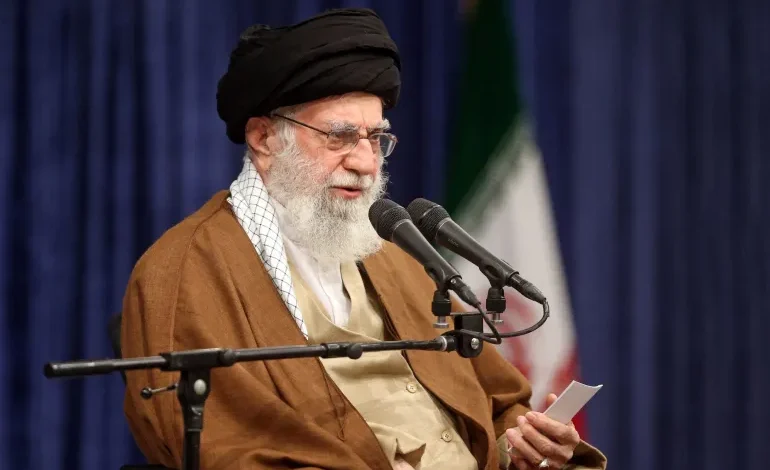The Iran-led axis of resistance in the aftermath of Syria’s upheaval

For decades, authorities in Iran have been meticulously building an “axis of resistance” of like-minded factions to oppose Israel and the United States across the region.
The alliance has included armed entities and government actors in Iraq, Lebanon, Syria and Yemen, along with Palestinian groups.
With the fall of Bashar al-Assad in Syria, Tehran lost not only a four-decade alliance with the ruling family in Damascus but also major axis lifelines.
Amid claims that the axis has collapsed, Iran’s Supreme Leader Ayatollah Ali Khamenei asserted last week such views are “ignorant” and wrong.
The span of resistance, he said, would “encompass the entire region” as the axis is not hardware that can be destroyed, rather it is faith and commitment that only grows stronger under pressure and will succeed in expelling the US from the region.
Kicking the US out, especially from neighbouring Iraq, remains a top goal for Tehran to avenge the January 2020 assassination of Qassem Soleimani, Iran’s top general and a main architect of the axis.
Cutting off access to Hezbollah
With Iran’s help from the early 1980s, Hezbollah grew into a major political force in Lebanon with a military force stronger than the country’s traditional army. The group has taken considerable hits from Israel in the past year, including the assassination of its longtime leader Hassan Nasrallah and top commanders.
The message coming from Tehran has emphasised that “Hezbollah is alive” despite the Israeli onslaught, with Khamenei saying the resistance of the Lebanese and Palestinian forces means “defeat” for Israel.
For now, it is undeniable that Tehran has lost a strategic ally in Syria and that will reflect on its regional influence in the short term, according to Tehran-based researcher and author Ali Akbar Dareini.
“The most important damage to Iran’s security interests is the severing of the ground link with Lebanon. The Tehran-Baghdad-Damascus-Beirut axis made it easy for Iran to have access to Hezbollah,” he told Al Jazeera.
“The collapse of the Assad government significantly challenges prospects of rebuilding and re-equipping the resistance network, especially Hezbollah,” Dareini said, adding that Israel will now be even more emboldened to attack the Lebanese group despite a shaky ceasefire that has held so far amid numerous violations.
In a second speech on Tuesday, Khamenei emphasised that “the Zionist regime believes it is preparing itself through Syria to encircle Hezbollah’s forces and uproot them, but the one who will be uprooted is Israel”.
While Iran has said it wants to maintain relations with Syria and that the new governing group’s distance from Israel would be a major deciding factor, Ahmed al-Sharaa, commander-in-chief of the new administration, says Syria is weary of wars and does not wish to make an enemy of Israel.
Hossein Salami, commander-in-chief of the Islamic Revolutionary Guard Corps (IRGC), said this week it is “unbearable” that Israeli soldiers are now merely kilometres away from Damascus, but added “they will be buried in Syria” in the future.
Further blows to axis members
An emboldened Israel has hit Yemen’s Houthis again, launching strikes on Wednesday night on Yemeni infrastructure for the third time since July, killing nine people and hitting an oil facility, ships in a major port, and power stations.
Israeli media also report that Israeli military and intelligence services may be pursuing their decades-old policy of assassinating leaders in Yemen to destabilise the group.
They have set their sights on Houthi leader Abdel-Malik al-Houthi, along with top Yemeni military officials and a senior Iranian commander who coordinates the efforts of the IRGC’s Quds Force in the country, according to the Israel Hayom newspaper.
In addition to attacks on shipping lanes near its waters in stated protest against Israel’s war on Gaza, the Yemeni group has kept up attacks on Israel.










